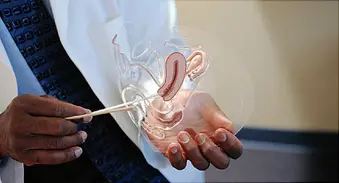Quiz: The Truth About the Vagina


Question 1/11
The vagina has several parts, including the labia and clitoris.
- True
- False
Question 2/11
The vagina has a standard shape and size.
- True
- False
Question 3/11
Thongs may not be as hygienic as other types of underwear.
- True
- False
Question 4/11
The G-spot is a specific area on the vaginal wall.
- True
- False
Question 5/11
You should never leave a tampon in longer than:
- 4 hours
- 8 hours
- 12 hours
- 24 hours
Question 6/11
Douching is not recommended because:
- It may upset the healthy balance of your vagina
- It can spread infection to your uterus
- It can increase your risk of pelvic inflammatory disease (PID)
- All of the above
Question 7/11
Your vaginal discharge should stay the same and not vary by amount, color, or consistency.
- True
- False
Question 8/11
Kegel exercises, which strengthen the pelvic muscles, may improve orgasms.
- True
- False
Question 9/11
Which of the following can indicate a problem?
- Unusual increase in vaginal discharge
- Irritation or itchiness around the vagina
- Change in the smell of vaginal discharge
- Any of the above
Question 10/11
Pain during sex is very rare.
- True
- False
Question 11/11
If you have a baby by cesarean delivery, all your babies must be born that way.
- True
- False
